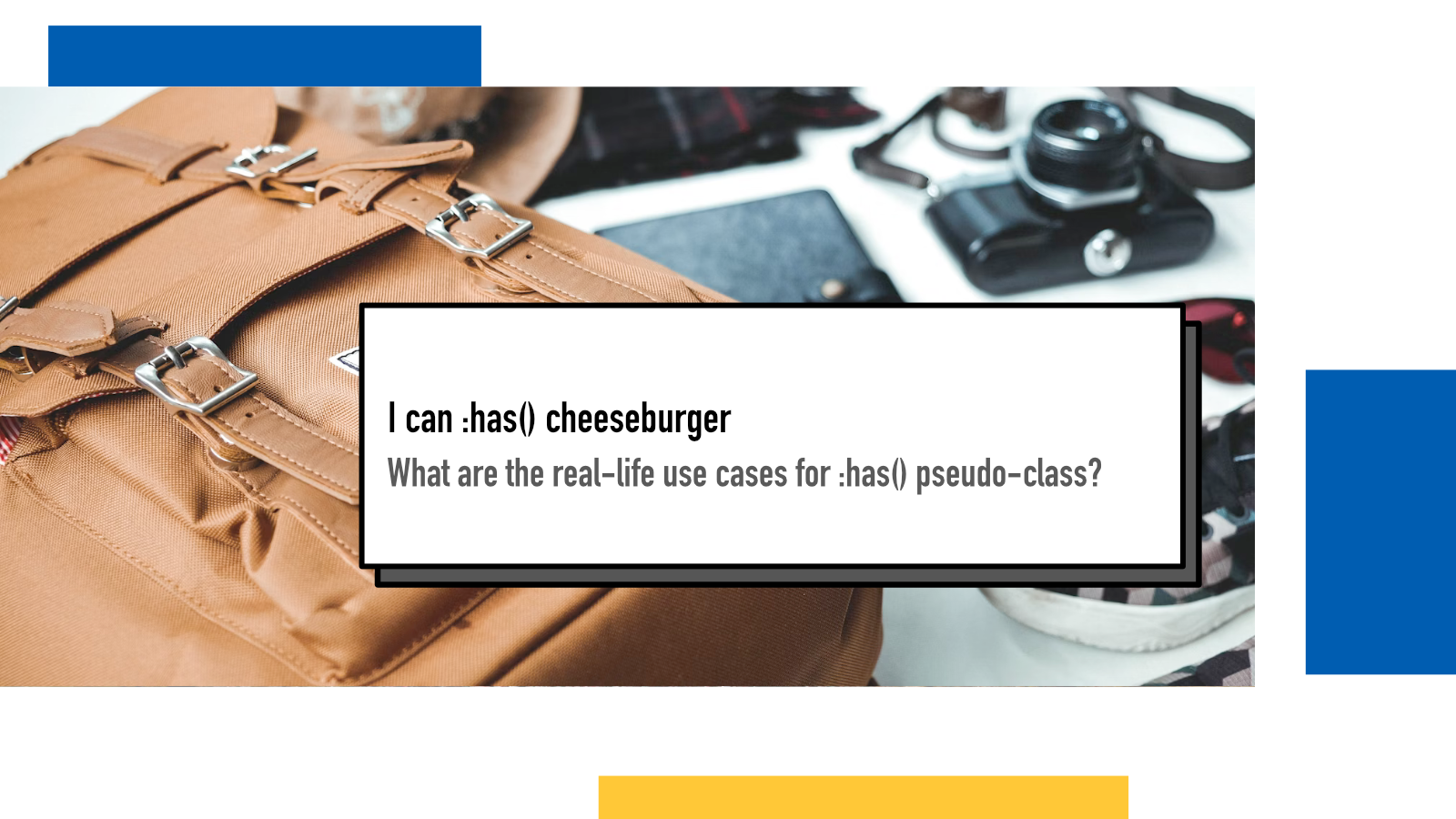I can :has() cheeseburger

All the most used browsers now support the
:has()
pseudo-class, which is one of the most exciting additions to CSS in a long time.
Ever since it was announced and added to first builds, I have collected tutorials, blog posts, ideas and use cases from the web so I can share them in this post.
Whenever a new piece of technology or feature lands, there’s often a few
artificial examples out there, leaving us wonder what the real-life use cases
would be. This hasn’t really been the case with
:has as the community immediately
started sharing real life examples.
Use-cases from the community
Ahmad Shadeed has written a couple of very
good pieces about :has. He wrote
CSS :has Parent Selector
two years ago when :has was still up and coming. Once the support landed in
browsers, he wrote
CSS :has() Interactive Guide, a nice interactive experience to learn how the pseudo-class works.
Andy Bell wrote a blog post sharing his
real-life use cases for :has(). From that post, I learned that there’s a
:target pseudo-class that selects the
element targeted by a fragment in the URL (like
http://www.example.com/index.html#section2).
Wes Bos of Syntax.fm originally tweeted a collection of use cases, then discussed them in a podcast and CJ made a Youtube video about them. It’s a solid collection of the base cases. In it, they have examples for styling parents based on the type of elements children are, an anywhere selector (which I really like myself) that allows styling an element based on for example a checkbox being checked somewhere else in the site and a great list of others.
Jim Nielsen shared a use case for disabling background scrolling in case of an open dialog in Mastodon. Robb Owen has also written about locking scroll with :has. Michelle Barker wrote about how to animate grid tracks with :has.
Tobias Ahlin Bjerrome has a nice post about selecting previous siblings. In it, he provides examples for choosing the immediate previous sibling, any nth previous sibling, all previous siblings and all but the immediate previous sibling, making the post a great one-stop shop for all the needs. This sibling selector seems to be a very popular use case as it was also mentioned in aforementioned collections of Andy Bell and Wes Bos.
Noah Liebman’s A progressively enhanced, accessible radio button using Web Components and :host(:has(🤯)) is a worthy read as well for those who are using (or planning to use) Web Components.
Are there other great resources I’ve missed? Join the discussion in Mastodon and share your tips with my readers!
(The title of the post is a reference to the I can haz cheezburger meme.)
Other posts from the community
- The Undeniable Utility Of CSS :has by Josh W. Comeau
If something above resonated with you, let's start a discussion about it! Email me at juhamattisantala at gmail dot com and share your thoughts. In 2025, I want to have more deeper discussions with people from around the world and I'd love if you'd be part of that.
Comments
Loading comments...
Continue discussion in Mastodon »